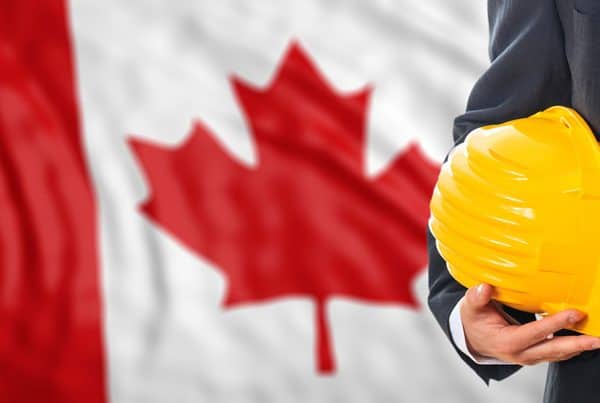Working in Canada is an eye-catching choice for a majority of skilled workers from across the globe. Annually, near 200,000 international skilled workers come to work in Canada on Temporary Work Permits. There is no reason that this cannot be you as well!
In order to work in Canada on a momentary basis, foreign skilled workers must have a job offer from a Canadian employer and be provided a Temporary Work permit by Human Resources and Skills Advancement Canada.
If you are getting a PR card, you can additionally apply by means of an ‘Open Work permit’ and also if you are American or Mexican you can fast track the work visa procedure using the NAFTA agreement.
There are 4 fundamental steps to getting a temporary work permit in Canada:
- Employer makes an application for work market opinion (if needed).
- Company prolongs job offer.
- Foreign skilled worker makes an application for work permit.
- Work permit is provided.
Step 1: Labour Market Impact Assessment (LMIA) previously LMOs.
Before requesting a Canadian Work Visa, most of the times, you have to obtain LMIAs formerly called an LMO from Service Canada
Just what is the difference between LMOs as well as LMIAs?
The treatment involved in acquiring a LMIA is similar to LMOs but there are necessary differences.
High Wage Position
The application forms have changed from the old LMOs as well as are a lot more extensive.
Employers should finish a ‘change strategy’ that will clarify exactly how they plan to permanently fill up the task being held by the temporary international worker;.
Companies are required to maintain more thorough documents throughout the foreign employee’s remain in Canada
Certain applications will be refined quicker.
International employees in proficient trades, high paid employees with wages in the leading 10% of Canadian earnings, and also workers coming for 120 days or much less will certainly all obtain LMIA decisions in 10 business days;.
A new time frame for high-wage work permits might be imposed however has not yet been revealed.
For Low Wage LMIAs
The procedures as well as requirements involved for Low Wage LMIAs is somewhat different compared to for High-Wage LMIAs. More limitations are imposed on low Wage work offers compared to high wage as adheres to:
Positive LMIAs for low-wage offers will certainly now allow employers to work with a foreign employee for only one year at a time.
For organizations with more than 10 employees, low-wage international employees could make up no more than 10% of the labour force.
Transitional procedures will apply to companies whose labour force does not abide by this new guideline.
Employers in the accommodation and food service sector in addition to the retail profession market will certainly not be allowed to obtain LMIAs for tasks in 10 lower-skill line of works.
As with high-wage LMIA applications, companies should now pay a higher application fee, full longer application forms, and keeps a detailed record concerning their employment record.
Who does not need to apply for a LMIA?
As in the case of the old LMOs, Canadian employers can hire some TFWs without an LMIA. The adhering to are groups where work permits are LMIA excluded:
- Workers covered under the NAFTA agreement;
- Intra-Company Transferees
- International Experience Canada participants (also called Working Holiday permit holders);
- Post-Graduate work permit holders;
- Bridging Open Work permit holders; and.
- Individuals in certain academic programs such as post-doctoral as well as going to professors.
- Programs such as those over have now been reclassified as ‘International Mobility Programs’.
Furthermore, starting in summertime 2015, companies working with some International Mobility Programs need to have their work offers authorized by a Canadian visa office before their hired staff members could ask for a work permit. The handling charge for the work deal approval application will certainly be $230.
Step 2: Company Extends Temporary work Offer.
The employer should write a copy of the positive LMIA along with an in-depth ‘work offer letter’ to the international skilled worker.
Canadian employers are required by CIC to prepare a formal employment contract or what our sector describes as the ‘Job Offer Letter’, which need to consist of:.
- Job title for the placement.
- Task summary.
- Needs for the position.
- Lists concerning begin and end dates.
- Specifics about the wage.
- The name as well as address of the employer.
Canada Revenue Agency will make certain that the work offer is legit and actual. Once the Canadian migration division has actually confirmed the work offer with a LMIA, CIC will certainly grant employment consent for the company’s future employees to work in Canada.
As soon as the LMIA is given, the Canadian company could extend a short-term job offer to the foreign skilled worker.
Step 3: Foreign Skilled Worker Applies for a Work permit
Once you have your LMIA as well as ‘Job Offer Letter’, you can obtain a Canadian temporary Work Permit. If the employer that is hiring you remains in the province of Quebec, you could additionally have to get a Certificate acceptation du Québec (CAQ) in order to work briefly in Quebec.
In some cases, the international employee will be required to participate in an interview with a visa officer. If the visa officer is pleased that the foreign worker’s employment will not negatively affect employment in Canada for Canadians, which the foreign worker obtains the placement, then the person will get their work permit
Keep in mind: In some cases, applicants from certain countries will certainly be called for to undertake medical exams.
Step 4. Get issued a work permit.
A Canada Boundary Services Company (CBSA) police officer will release the Canada Temporary Work Permit at the point of entrance when the international employee arrives in Canada. Relying on the international worker’s nation of citizenship, a Temporary Citizen Visa (TRV) may additionally be acquired in order to enter Canada.
New! – ‘Open up Work Allows’ for Public Relations Candidates.
As of December 15, 2012, Citizenship and Immigration Canada revealed that they will certainly be allowing permanent resident candidates to acquire work permits while they are waiting for the completion of their application. This will permit permanent resident candidates to currently work while they are awaiting the response on their application!
Who is eligible for the Bridging Job License?
- Federal Skilled Worker Candidates.
- Canadian Experience Class Applicants.
- Federal Proficient Trades Program Applicants.
- Provincial Nominees.
What are the requirements?
In order to be eligible, you need to come under among the above categories, and also you should likewise satisfy the following requirements:
- You are currently in Canada.
- You have a valid work permit and set to end within 4 months.
- You have actually got a positive response on your permanent resident application under a financial class, Federal Skilled Worker, Canadian Encounter Course, or the Federal Skilled Professions Program.
- You have actually made an application for an Open Work permit.
This first time ‘open work permit’ is an excellent development in Canadian immigration and allows candidates to work throughout the handling of their PR applications.
Canadian Working Visas for Americans
Are you a person of the USA that intends to work in Canada? If so, you could fast lane your means to working in Canada by means of NAFTA. Americans are obtaining Canadian work visas in record numbers as well as, if applicable, you need to capitalize on this opportunity!
The Canadian economic situation is solid as well as is taking in many US Citizens seeking work in Canada. Fortunately, we have the NAFTA Contract. NAFTA makes getting a Canada work visa for Americans and Mexicans much easier.
What is required is a work offer from a Canadian business in a field noted in the NAFTA agreement, proof of certifications consisting of job experience and also education and learning, in addition to citizenship.
Leading 4 FAQs about Canadian Work permits.
Question 1: Do all immigrants need a Canada Job Visa?
No. There are a particular individual that are EXEMPTING or does not call for Canada work visa, such as:
- Foreign Diplomats.
- Army Employee.
- Doing Musicians (under specific conditions).
- Professional athletes.
- Ship or Truck Worker.
- Designated Foreign Buyers and Vendors.
Note: There are various other exemptions that are found in the Canadian Immigration Laws.
Question 2: If I work in Canada on a work permit, can I obtain permanent residency?
Perhaps, if you work in Canada for one or more years under a legitimate work permit, you could be eligible for permanent resident status under the Canadian Experience Class or an additional category relying on your job category and your language skills.
Question 3: Can I obtain a temporary work permit as well as a Canada immigration visa?
Yes, you can. You might request a temporary work permit on its own or in combination with an application for a Canada immigration visa.
Question 4: How long will it take to obtain my work permit?
Work permits that are obtained at a Canadian Port of Entrance can be released the exact same day (which is unusual). A lot of work permit applications are submitted outside of Canada, as well as are released within a matter of days or weeks, relying on whether or not a medical exam is needed and also the workload at the visa office to which you applied.
Why Looking for Professional Assistance for Work Visas is Important.
Often, employment and also business possibilities are time delicate and because of that having a legal rep in Canada with ise is the most effective means to continue. It is highly advisable you call our immigration office and consult with our lawyer right away.





